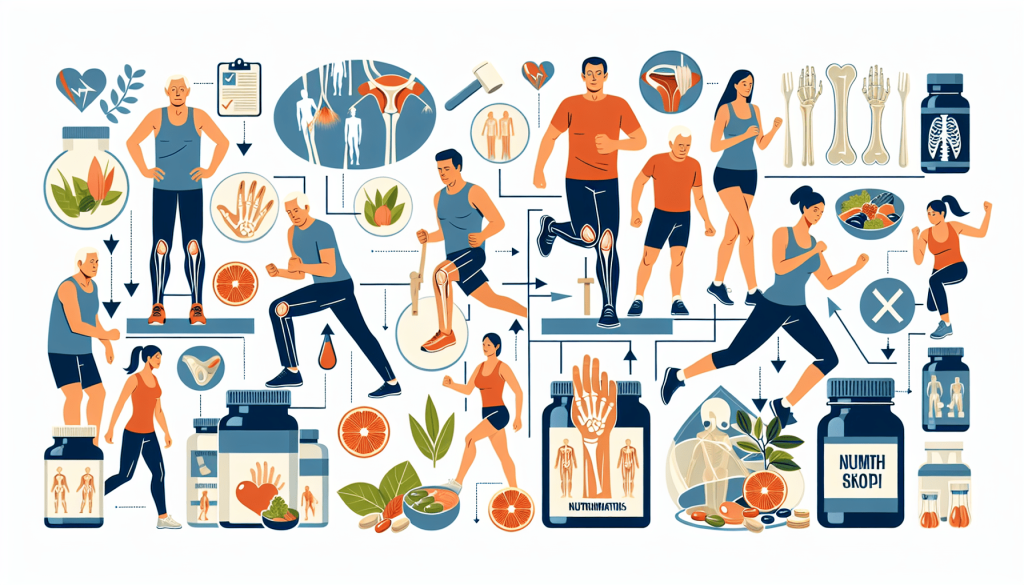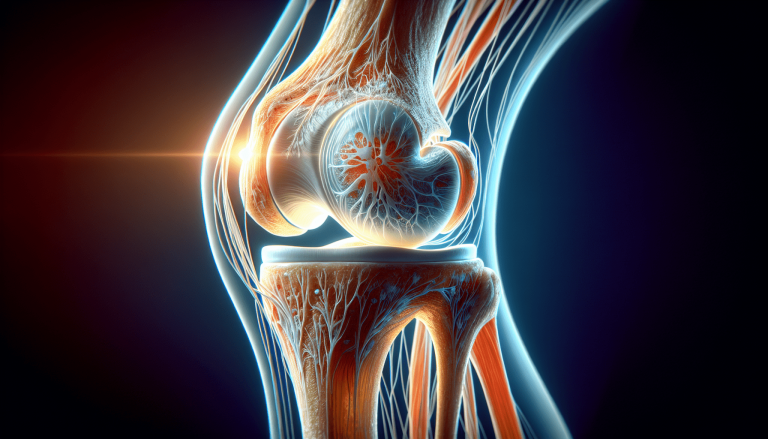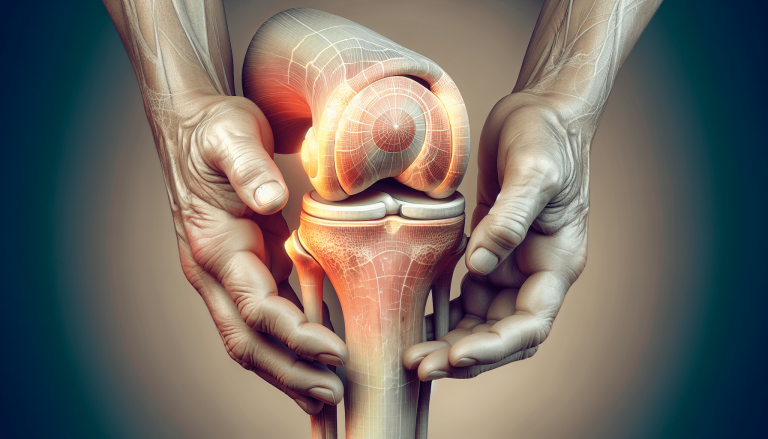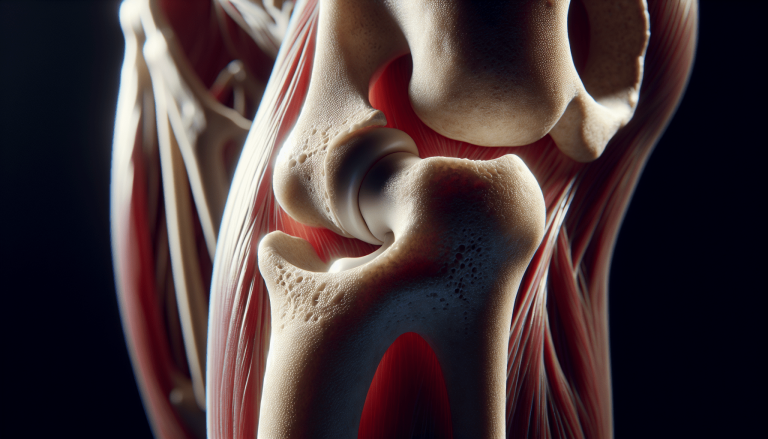How Can I Make My Joints Healthy?
Are you curious about how to keep your joints healthy and pain-free? In this article, we will explore simple and effective ways for you to maintain the health of your joints. From proper nutrition to regular exercise and preventive measures, we will provide valuable tips and insights to help you achieve optimal joint health. Whether you are young or old, taking care of your joints is essential for a vibrant and active lifestyle. Join us as we uncover the secrets to keeping your joints happy and strong.
Maintain a Healthy Weight
Importance of weight management
Maintaining a healthy weight is crucial for the overall health and well-being of your joints. Excess weight puts undue stress on your joints, increasing the likelihood of joint problems and accelerating their deterioration over time. By managing your weight, you can reduce the strain on your joints and minimize the risk of developing conditions such as arthritis.
Effects of excess weight on joints
Carrying excess weight can have a detrimental impact on your joints. The added pressure on your knees, hips, and ankles can wear down the protective cartilage, leading to joint pain, inflammation, and stiffness. Furthermore, excess weight can increase the production of inflammatory chemicals in the body, exacerbating joint inflammation and contributing to the progression of joint diseases.
Strategies for weight loss
If you are overweight or obese, focusing on gradual weight loss can significantly benefit your joint health. Adopting a well-balanced diet and engaging in regular exercise are key components of any successful weight loss plan. Incorporate nutrient-dense foods into your meals, such as fruits, vegetables, lean proteins, and whole grains, while reducing your intake of processed and sugary foods. Additionally, consider consulting with a healthcare professional or nutritionist to create a personalized weight loss program tailored to your specific needs.
Engage in Regular Exercise
Benefits of exercise for joint health
Regular exercise is a fundamental aspect of maintaining healthy joints. Engaging in physical activity helps improve joint flexibility, strength, and stability, thereby reducing the risk of joint injuries and preserving joint function. Furthermore, exercising promotes weight loss or weight management, which alleviates the burden on your joints and minimizes the likelihood of developing joint-related conditions.
Types of exercises beneficial for joints
Certain types of exercises are particularly beneficial for joint health. Low-impact activities like swimming, cycling, and brisk walking are gentle on the joints while providing cardiovascular benefits. Strength training exercises, such as lifting weights or using resistance bands, help strengthen the muscles around the joints, providing better support and stability. Flexibility exercises like yoga and Pilates can improve joint range of motion and relieve stiffness.
Importance of proper form and technique
When engaging in exercise, it is crucial to prioritize proper form and technique to minimize the risk of joint injuries. Follow the guidance of a qualified fitness professional or trainer to ensure you are performing exercises correctly. By maintaining proper posture and technique, you can protect your joints and prevent unnecessary strain or stress.
Finding activities that suit your fitness level
It’s important to find physical activities that suit your fitness level and accommodate any existing joint conditions or limitations. Start with low-impact exercises if you are new to fitness or have joint concerns. Gradually increase the intensity and duration of your workouts as your fitness level improves. Listen to your body and modify or switch activities if you experience any discomfort or pain in your joints.

Follow a Balanced Diet
Role of nutrition in joint health
Maintaining a balanced diet is essential for supporting joint health. Proper nutrition provides the building blocks and nutrients necessary for the growth, repair, and maintenance of healthy joint tissues. A diet rich in vitamins, minerals, and antioxidants can help reduce inflammation, strengthen bones, and support optimal joint function.
Foods rich in joint-friendly nutrients
Incorporating specific nutrients into your diet can offer numerous benefits for your joints. Omega-3 fatty acids, found in fatty fish like salmon and sardines, possess anti-inflammatory properties that can help alleviate joint pain and stiffness. Vitamin C, abundant in citrus fruits and leafy greens, is essential for the production of collagen, a vital component of joint cartilage. Calcium-rich foods like dairy products, broccoli, and fortified tofu are essential for maintaining strong and healthy bones.
Incorporating anti-inflammatory foods into your diet
To promote joint health, consider incorporating anti-inflammatory foods into your daily diet. Turmeric, ginger, and green leafy vegetables like spinach and kale are known for their anti-inflammatory properties. Berries, particularly strawberries and blueberries, contain antioxidants that can help reduce inflammation and protect joint tissues.
Limiting processed and sugary foods
While it’s important to focus on consuming nutrient-dense foods, it’s equally crucial to limit the consumption of processed and sugary foods. Processed foods often contain additives and trans fats that can trigger inflammation in the body. Excessive sugar consumption can promote inflammation and lead to weight gain, placing additional stress on your joints. Opt for whole, unprocessed foods whenever possible to support both your overall health and joint function.
Stay Hydrated
Significance of proper hydration for joints
Staying properly hydrated is essential for maintaining healthy joints. Water plays a vital role in cushioning and lubricating the joints, reducing friction and facilitating smooth movement. Inadequate hydration can lead to decreased joint lubrication, increased stiffness, and discomfort.
Recommended daily water intake
The recommended daily water intake varies based on factors such as age, activity level, and climate. However, a general guideline is to consume at least eight glasses (64 ounces) of water per day. Additionally, consider adjusting your water intake based on physical activity and external factors such as heat or humidity.
Other hydrating fluids and their benefits
In addition to water, certain fluids can contribute to your hydration and provide additional joint health benefits. Natural fruit juices, such as cherry juice, contain antioxidants and anti-inflammatory compounds that can help reduce joint pain and inflammation. Herbal teas, such as green tea or chamomile tea, can have anti-inflammatory properties and contribute to overall hydration. However, it’s important to be mindful of added sugars or caffeine that may be present in these beverages and consume them in moderation.

Protect Your Joints
Using proper techniques when lifting heavy objects
Proper lifting techniques are crucial for protecting your joints, especially when handling heavy objects. Bend your knees and use the strength in your legs to lift, rather than placing unnecessary strain on your back or joints. Additionally, consider using assistive devices, such as dollies or carts, to reduce the load on your joints.
Wearing appropriate footwear
Wearing appropriate footwear is essential for maintaining proper joint alignment and reducing the risk of injury. Choose shoes that provide adequate support and cushioning for your feet and joints. Consider consulting with a podiatrist or footwear specialist to ensure you are wearing the correct type of shoes for your activity level and foot structure.
Benefits of using joint braces or supports
In certain situations, using joint braces or supports can provide additional stability and protection to your joints. These devices can help alleviate pain, reduce swelling, and prevent further damage. However, it’s important to consult with a healthcare professional to determine if and when such support is appropriate for your specific joint condition.
Avoiding activities that put excessive stress on joints
Engaging in activities that place excessive stress or impact on your joints can increase the risk of injury or exacerbate existing joint problems. Avoid high-impact activities like running or jumping if you have joint concerns. Instead, opt for low-impact alternatives that are gentler on your joints, such as swimming or cycling.
Manage Stress Levels
Impact of stress on joint health
Chronic stress can have a negative impact on joint health. Stress causes the body to release cortisol, a hormone that can promote inflammation and exacerbate joint pain and stiffness. Additionally, stress can contribute to unhealthy coping mechanisms, such as overeating or being sedentary, which can further worsen joint-related issues.
Practicing stress-reducing techniques
Incorporating stress-reducing techniques into your daily routine can benefit both your mental well-being and joint health. Meditation, deep breathing exercises, or yoga can help calm the mind and reduce stress levels. Engaging in regular physical activity, such as walking or jogging, can also release endorphins and alleviate stress.
Seeking professional help if needed
If stress is significantly impacting your daily life or overall well-being, don’t hesitate to seek professional help. A mental health professional can provide guidance, support, and effective strategies for managing stress. By addressing and managing stress, you can protect your joints and improve your overall quality of life.
Quit Smoking
Effects of smoking on joint health
Smoking has harmful effects on joint health and can contribute to the development and progression of joint diseases. Smoking cigarettes releases chemicals that can damage joint tissues and impair the healing process. It also increases inflammation throughout the body, including in the joints, worsening pain and stiffness.
Benefits of quitting smoking
Quitting smoking offers numerous benefits for your joints and overall health. Within weeks of quitting, blood circulation improves, allowing oxygen and nutrients to reach joint tissues more effectively. Quitting smoking also reduces inflammation, enhancing the body’s ability to heal and repair damaged joints. Furthermore, breaking the habit can improve overall lung and cardiovascular health, enabling you to engage in physical activities that support joint health.
Resources and support for smoking cessation
If you are a smoker looking to quit, several resources and support systems are available to assist you in your journey. Consider reaching out to your healthcare provider for guidance and to explore options such as nicotine replacement therapy or prescription medications. Support groups, counseling, and online programs can also provide encouragement and strategies to help you stay smoke-free.
Prioritize Joint-Friendly Movements
Avoiding repetitive motions
Repetitive motions can stress your joints and contribute to the development of overuse injuries. Whether you have a physically demanding job or participate in activities that involve repetitive movements, take measures to minimize strain on your joints. Take frequent breaks to stretch and change positions, vary your activities throughout the day, and use ergonomic tools or equipment to reduce joint strain.
Maintaining proper posture
Maintaining good posture is essential for joint health, as it ensures proper alignment and minimizes unnecessary stress on your joints. Whether sitting, standing, or engaging in physical activities, be mindful of your posture. Practice proper alignment by keeping your spine straight, shoulders relaxed, and core engaged. Avoid prolonged periods of poor posture that may add strain to your joints.
Stretching and warming up before physical activity
Prioritizing stretching and warming up before engaging in physical activity is crucial for preparing your joints and muscles for the movements ahead. Warming up increases blood flow to the joints, promoting better lubrication and flexibility. Incorporate dynamic stretches, such as leg swings or arm circles, to warm up different muscle groups and joints.
Using ergonomic equipment and furniture
To minimize joint strain during daily activities, consider incorporating ergonomic equipment and furniture into your environment. Ergonomic chairs, keyboards, and mouse pads can help maintain proper alignment and reduce joint discomfort during prolonged periods of work or study. Adjusting the height and position of your work surface can also help promote optimal joint positioning and minimize unnecessary stress.
Take Joint Supplements
Benefits and limitations of joint supplements
Joint supplements can be a helpful addition to support joint health, but it’s important to understand their benefits and limitations. Supplements like glucosamine and chondroitin are commonly used to manage joint pain and promote cartilage health. They may reduce symptoms and slow down the progression of joint diseases. However, it’s important to note that individual responses to supplements may vary, and not all supplements have consistent scientific evidence supporting their efficacy.
Popular joint supplements
Glucosamine and chondroitin are among the most popular joint supplements available. Glucosamine is believed to stimulate the production of cartilage while chondroitin helps maintain the elasticity and cushioning properties of cartilage. Omega-3 fatty acid supplements, usually derived from fish oil, can also have anti-inflammatory effects that benefit joint health. It is advisable to consult with a healthcare professional before starting any supplements to ensure they are suitable for your specific circumstances.
Consulting with a healthcare professional before starting any supplements
While joint supplements are generally considered safe for most individuals, it’s always wise to consult with a healthcare professional before introducing them into your regimen. They can assess your individual needs, pre-existing conditions, and potential interactions with other medications to determine the best course of action. A healthcare professional’s guidance can help you make informed decisions regarding the use of joint supplements.
Get Regular Check-Ups
Importance of routine medical examinations
Regular medical check-ups are essential for monitoring your overall health, including your joint health. Routine examinations allow healthcare professionals to assess your joint function, identify any abnormalities or early signs of joint diseases, and provide appropriate guidance or treatment.
Specific tests for joint health evaluation
During routine check-ups, healthcare providers may perform specific tests to evaluate your joint health. X-rays, magnetic resonance imaging (MRI), or ultrasound scans can help visualize joint structures, identify any inflammation or joint damage, and assess the extent of joint deterioration. Blood tests may also be conducted to measure inflammatory markers or rule out underlying conditions that can affect joint health.
Identifying and addressing joint problems early
Early detection and intervention are key to addressing joint problems and preventing further damage. Regular check-ups allow healthcare professionals to identify any joint abnormalities, such as reduced range of motion or swelling, at an early stage. By addressing these issues promptly, treatment options can be implemented, potentially minimizing the impact on joint health and overall quality of life.
In conclusion, prioritizing joint health is essential for maintaining overall well-being and enjoying an active lifestyle. By maintaining a healthy weight, engaging in regular exercise, following a balanced diet, staying properly hydrated, protecting your joints during daily activities, managing stress levels, quitting smoking, practicing joint-friendly movements, considering joint supplements, and getting regular check-ups, you can take significant steps towards promoting and maintaining healthy joints. Incorporate these strategies into your lifestyle and consult with healthcare professionals to ensure you are taking the best possible care of your joints. Your joints will thank you for the love and attention you give them, enabling you to enjoy a life full of movement and vitality.
Additional Resources

Imagine playing hide and seek with your grandchildren, in the backyard… Later, you’ll go with them to the park and they’ll blow you a kiss, telling you, you’re the best grandpa or grandma in the universe.
Before arthritis took over your joints and bones and made you feel like a burden for those around you.
But what if I told you that you can have all of that back without taking a single pill, without paying a single visit to a physician’s office. What if I told you that the key to moderate your arthritis, even by 80%, hides deep inside in your kitchen’s cupboard?
For details about a natural and 100% arthritis relief method that can turn you back into a healthy man or woman , with perfectly functioning joints and total control over my movements, click here: https://bit.ly/Flexotone-Joint-Pain-Relief







